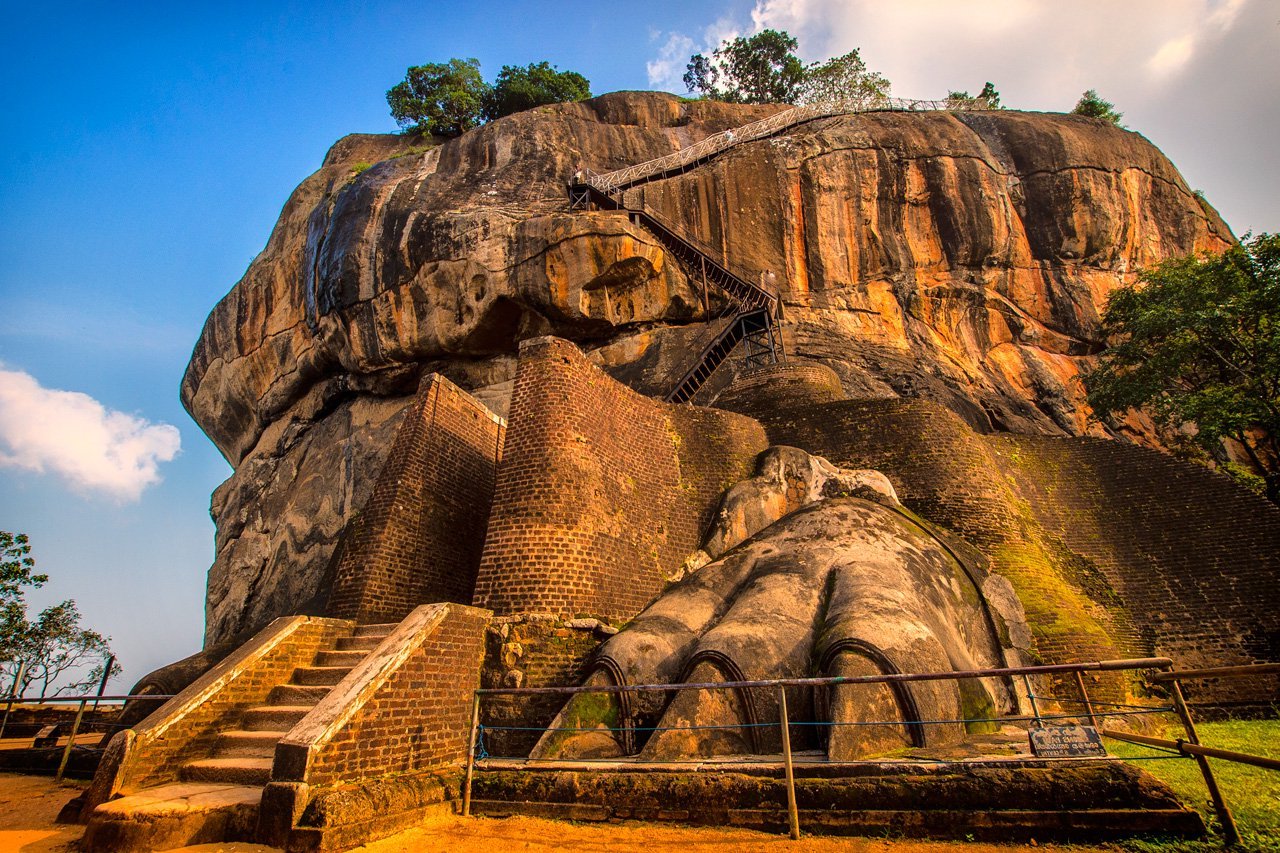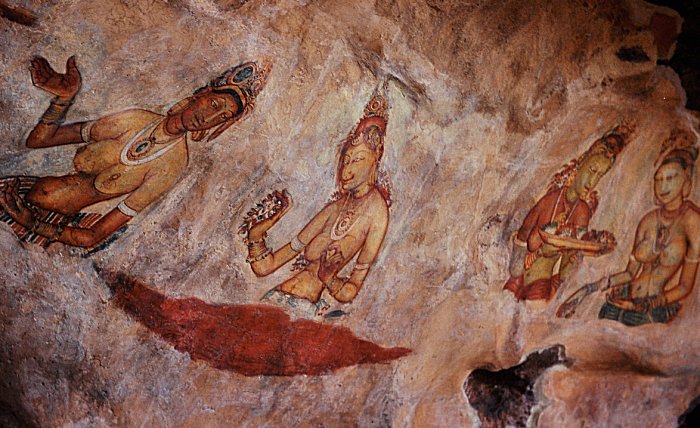Amazing ‘Sigiriya’- ‘Lion Rock’ Fortress In Sri Lanka With Frescoes, Mirror Wall And Miniature Gardens
A.Sutherland - AncientPages.com - Sri Lanka’s ancient site of historical and archaeological significance is dominated by a massive column of rock the so-called ‘Sigiriya Rock’.
Sigiriya rock (or the ‘Lion rock’) fortress is the spectacular and the oldest structure, approximately 200 meters (660 ft) high, located in the Matale District of the Central Provincen of Sri Lanka.
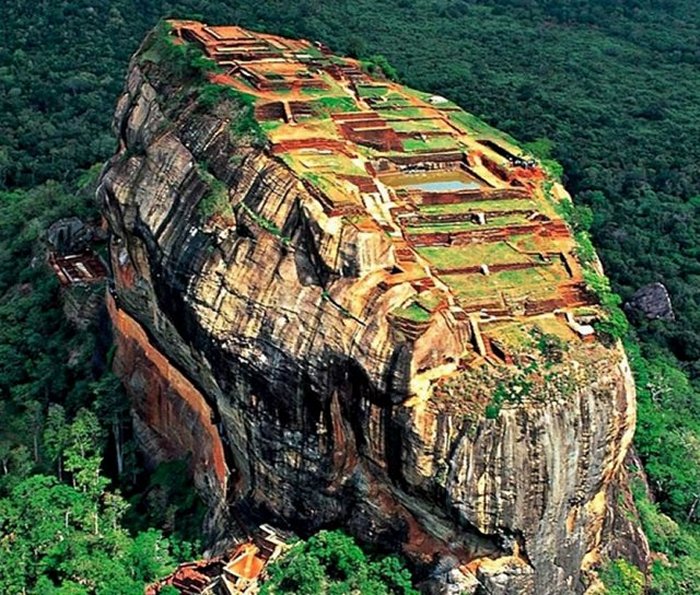
Sigiriya contains miniature water gardens and traditionmal water gardens considered to be are among the oldest in the world and their underground water ways are still functioning.
Sigiriya fortress features graffiti, frescoes, beautiful, landscaped gardens and fantastic 360-degree views. In fact, it is wrongly described as a fortress or castle but it is a perfectly planned multi-layered and complex royal city that covers several square meters in extent.
Miniature Water Gardens
According to archaeologists and historians, Sigiriya is a ‘unique combination of fifth century urban planning, hydraulic management, perfectly design landscaping, engineering, architecture, painting and sculpture.
Today the Sigiriya complex is consisted of several parts and includes ramparts, moats, pleasure gardens, frescoes, mirror Wall. Lions Paw, summit, artificial lake along with inner and outer cities, a citadel that extends about 18 sq km and seven kilometers long dam.
The ‘Lion rock’ earned its name from the enormous lion which greeted visitors halfway up the rock on a small plateau.
See also:
Mysterious Mount Roraima Rising Over 8000 Feet Into The Clouds
Yungang Grottoes: Marvellous Example Of Ancient Buddhist Rock-Cut Architecture
Great Living Chola Temples: Outstanding Workmanship Of Chola Dynasty Builders Of South India
In ancient times, the same lion carved of rock warned enemies approaching the fortress.
Sigiriya contains miniature water gardens and traditional water gardens considered to be among the oldest in the world and their underground water ways are still functioning.
History Of Sigiriya
According to the ancient Sri Lankan chronicle the 'Culavamsa', this site was selected by King Kasyapa (473 - 495 CE) for his new capital. He is credited with the construction of the Sigiriya citadel and the surrounding city.
He acquired the throne by overthrowing his father, and usurping his brother who had rightful heir to the throne, Moggallana, in a palace coup. Kasyapa imprisoned and later executed his father but later he lost his life in the battle.
He built his palace on the top of this rock and decorated its sides with colorful frescoes. On a small plateau about halfway up the side of this rock he built a gateway in the form of an enormous lion. The capital and the royal palace were abandoned after the king's death.
It was used as a Buddhist monastery until the 14th century, which is confirmed by the historical evidence but later it was lost for the jungle. During the 19th century, Buddhist monks again returned to the site and established a temple at Pidurangala.
Frescoes And Paintings Of Sigiriya
The most famous features of the Sigiriya complex are the 5th century paintings found
about the 100 meters above the ground’s level.
The technique used, is called ‘fresco’ which means to paint on the wet plaster. It is proved by a lady’s figure with three hands and another with three nipples. The painter could not erase the unsuitable hand and the extra nipple because he has painted it on a wet plaster.
However, there are several different interpretations of these maidens that simply can represent figures from the royal palace.
Mirror Wall In The Sigiriya Complex
It is said that originally this mostly unusual wall was so perfectly polished that the king could see himself whilst he walked alongside it. Made of brick masonry, the wall was covered in highly polished white plaster. This walled path continued to the summit through the lion’s mouth. The mirror wall was designed by skilled builders who used a technique that could combine natural rock, brick powder, kaolin, dolomite and oil of a bark of Dorana tree,commonly used for varnishing.
The Graffiti Tells Stories About Sigiriya
After Kasyapa's reign ended, the monastery with monks appeared again and people began to visit this
fascinating place writing poems about Sigiriya.
More than 1200 graffiti shed light on the society, literature and people who had a tradition of traveling to see the places other than on pilgrimage during the period from 6th to 13th century AD.
According to one graffiti, for instance, we learn that the queens at the time, have worn the silk from Beijing.
Lions Paw And Lion Staircase
One of the most dramatic features at Sigiriya is the great Lion Staircase, now only some ruins.
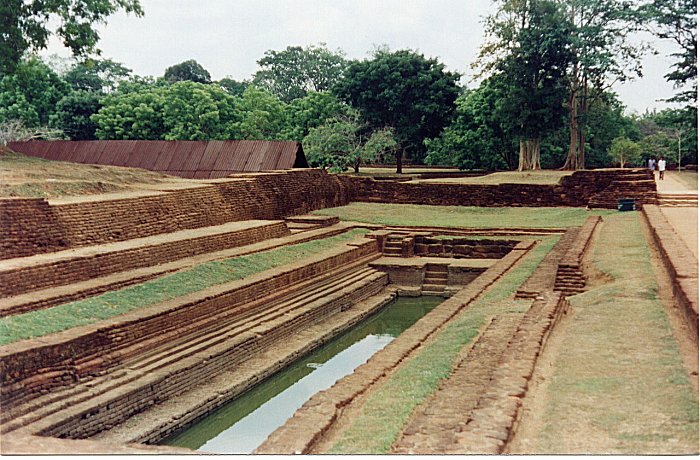
A pool in the garden complex: Sigiriya, Sri Lanka. Gardens at the foot of Sigiriya Rock. Copyright H.J.Moyes ([email protected]) October 2000 via wikipedia
On a small plateau approximately halfway up this rocky structure, the king ordered to build a gateway shaped as an enormous lion. There was once a sculpted lion's head above the legs and paws on both sides of the entrance, but the head collapsed years ago. The name of the place is derived from this structure —'Sihagiri', the Lion Rock. The lion - in its ruined state - is impressive even today. The graffiti describes the great lion and the entrance.
Both the Palace on the summit of the rock structure and a gateway in the form of an enormous lion was built on orders of the king; however, he did not stay at the palace, which has been used at ceremonial occasions, instead.
“...The Palace on the summit and the great lion presided over the surrounding countryside, is a powerful expression of both actual and symbolic royal authority and control over “landscape of power” radiating across the territory of the Sigiriya kingdom....” (Bandaranayaka. S.)
In "Sigiriya: City, Palace, and Royal Gardens," Senake Bandaranayake wrote that excavations revealed a suburban settlement. Eastern side of the rock was the" metropolis of the Sigiriya complex, where the bulk of the city’s population lived – nobles, officials, traders, craftsmen soldiers, servants and slaves...”
Sigiriya is one of the best preserved examples of ancient urban planning.
Written by – A. Sutherland - AncientPages.com Senior Staff Writer
Copyright © AncientPages.com All rights reserved. This material may not be published, broadcast, rewritten or redistributed in whole or part without the express written permission of AncientPages.com
Expand for referencesBandaranayake S. Sigiriya: City, Palace and Royal Gardens
More From Ancient Pages
-
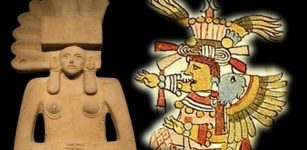 What Was An Aztec Confession?
Ancient History Facts | Jul 25, 2017
What Was An Aztec Confession?
Ancient History Facts | Jul 25, 2017 -
 Empusa – Shape-Shifting Evil Female Demon In Greek Myth And Folklore
Featured Stories | Jun 3, 2020
Empusa – Shape-Shifting Evil Female Demon In Greek Myth And Folklore
Featured Stories | Jun 3, 2020 -
 Adad ‘Lord Of Abundance’- Mesopotamian Weather God Who Was Responsible For Fertility, Wealth And Oracles
Featured Stories | Mar 11, 2020
Adad ‘Lord Of Abundance’- Mesopotamian Weather God Who Was Responsible For Fertility, Wealth And Oracles
Featured Stories | Mar 11, 2020 -
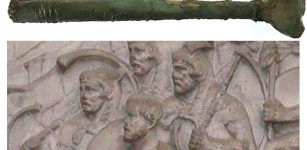 Vindolanda Treasures: Rare Roman Cornu Mouthpiece – Instrument of War – Uncovered
Archaeology | Sep 24, 2022
Vindolanda Treasures: Rare Roman Cornu Mouthpiece – Instrument of War – Uncovered
Archaeology | Sep 24, 2022 -
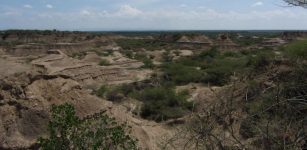 230,000-Year-Old Human Remains Discovered In Eastern Africa – Rewrite Ancient History
Archaeology | Jan 14, 2022
230,000-Year-Old Human Remains Discovered In Eastern Africa – Rewrite Ancient History
Archaeology | Jan 14, 2022 -
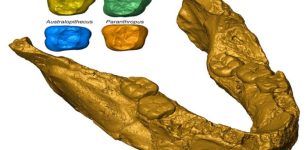 Fossil Tooth Analysis Sheds More Light On Earliest Humans From Southern Africa
Archaeology | Jul 15, 2022
Fossil Tooth Analysis Sheds More Light On Earliest Humans From Southern Africa
Archaeology | Jul 15, 2022 -
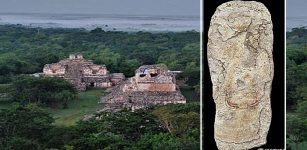 A Painted Vault Lid Discovered In Royal Palace Of Ek’ Balam Will Shed Light On History Of The Acropolis Of Ek’
Archaeology | Sep 16, 2023
A Painted Vault Lid Discovered In Royal Palace Of Ek’ Balam Will Shed Light On History Of The Acropolis Of Ek’
Archaeology | Sep 16, 2023 -
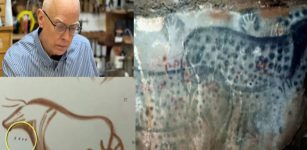 Cryptic Ice Age Markings In European Caves Deciphered – Proto-Writing Discovered By Amateur Archaeologist
Archaeology | Jan 5, 2023
Cryptic Ice Age Markings In European Caves Deciphered – Proto-Writing Discovered By Amateur Archaeologist
Archaeology | Jan 5, 2023 -
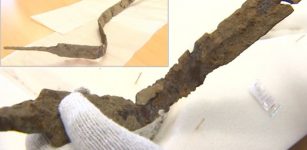 Rare 2000-Year-Old Celtic Sword Unearthed In East Bohemia
Archaeology | Sep 15, 2020
Rare 2000-Year-Old Celtic Sword Unearthed In East Bohemia
Archaeology | Sep 15, 2020 -
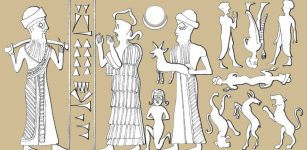 City Of Purushattum: Oldest Known Written Document Reveals History Of 4,500-Year-Old Silver City
Archaeology | Jun 4, 2017
City Of Purushattum: Oldest Known Written Document Reveals History Of 4,500-Year-Old Silver City
Archaeology | Jun 4, 2017 -
 On This Day In History: Hubble Space Telescope Was Launched – On April 24, 1990
News | Apr 24, 2016
On This Day In History: Hubble Space Telescope Was Launched – On April 24, 1990
News | Apr 24, 2016 -
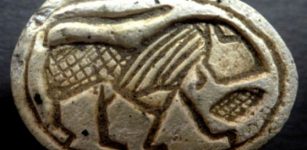 A Scarab Seal At Tel Gerisa, Depicts Walking Lion – Symbol Of Strength, Power And Authority
Archaeology | Sep 5, 2023
A Scarab Seal At Tel Gerisa, Depicts Walking Lion – Symbol Of Strength, Power And Authority
Archaeology | Sep 5, 2023 -
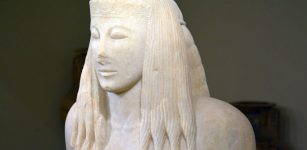 ‘Supernatural’ Sized Daughter Of Thera: Rare Masterpiece Of Greek Antiquity Revealed To The Public
Artifacts | Oct 1, 2022
‘Supernatural’ Sized Daughter Of Thera: Rare Masterpiece Of Greek Antiquity Revealed To The Public
Artifacts | Oct 1, 2022 -
 2,500-Year-Old Phoenician Shipwreck Being Rescued By Archaeologists
Archaeology | Jul 4, 2023
2,500-Year-Old Phoenician Shipwreck Being Rescued By Archaeologists
Archaeology | Jul 4, 2023 -
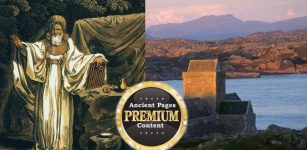 Secret Ancient Knowledge Of The Druids And The Mystery Of The Missing Library Of Iona
Artifacts | Sep 4, 2016
Secret Ancient Knowledge Of The Druids And The Mystery Of The Missing Library Of Iona
Artifacts | Sep 4, 2016 -
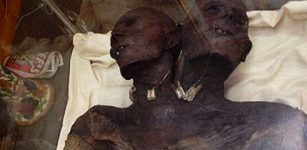 Kap Dwa – Mysterious Two-Headed Mummified Patagonian Giant – Real Or Fake?
Featured Stories | May 20, 2021
Kap Dwa – Mysterious Two-Headed Mummified Patagonian Giant – Real Or Fake?
Featured Stories | May 20, 2021 -
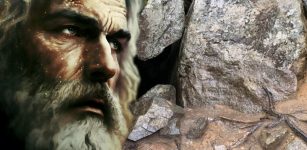 Why Did Sages And Shamans Repeatedly Visit The Mysterious Finnish Pirunkirkko Cave (Devil’s Church)?
Archaeology | Nov 27, 2023
Why Did Sages And Shamans Repeatedly Visit The Mysterious Finnish Pirunkirkko Cave (Devil’s Church)?
Archaeology | Nov 27, 2023 -
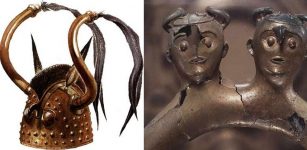 Mysterious Bronze Age Viksö Helmets With Horns Related To Myths, Holy Animals And Divine Power
Artifacts | Feb 27, 2018
Mysterious Bronze Age Viksö Helmets With Horns Related To Myths, Holy Animals And Divine Power
Artifacts | Feb 27, 2018 -
 Mayan Maize God And Ancient City Of El Mirador
Featured Stories | Apr 25, 2019
Mayan Maize God And Ancient City Of El Mirador
Featured Stories | Apr 25, 2019 -
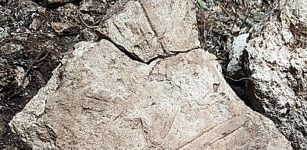 Extremely Brutal Conflicts Among Maya Broke Out Before Civilization’s Decline
Archaeology | Aug 8, 2019
Extremely Brutal Conflicts Among Maya Broke Out Before Civilization’s Decline
Archaeology | Aug 8, 2019

